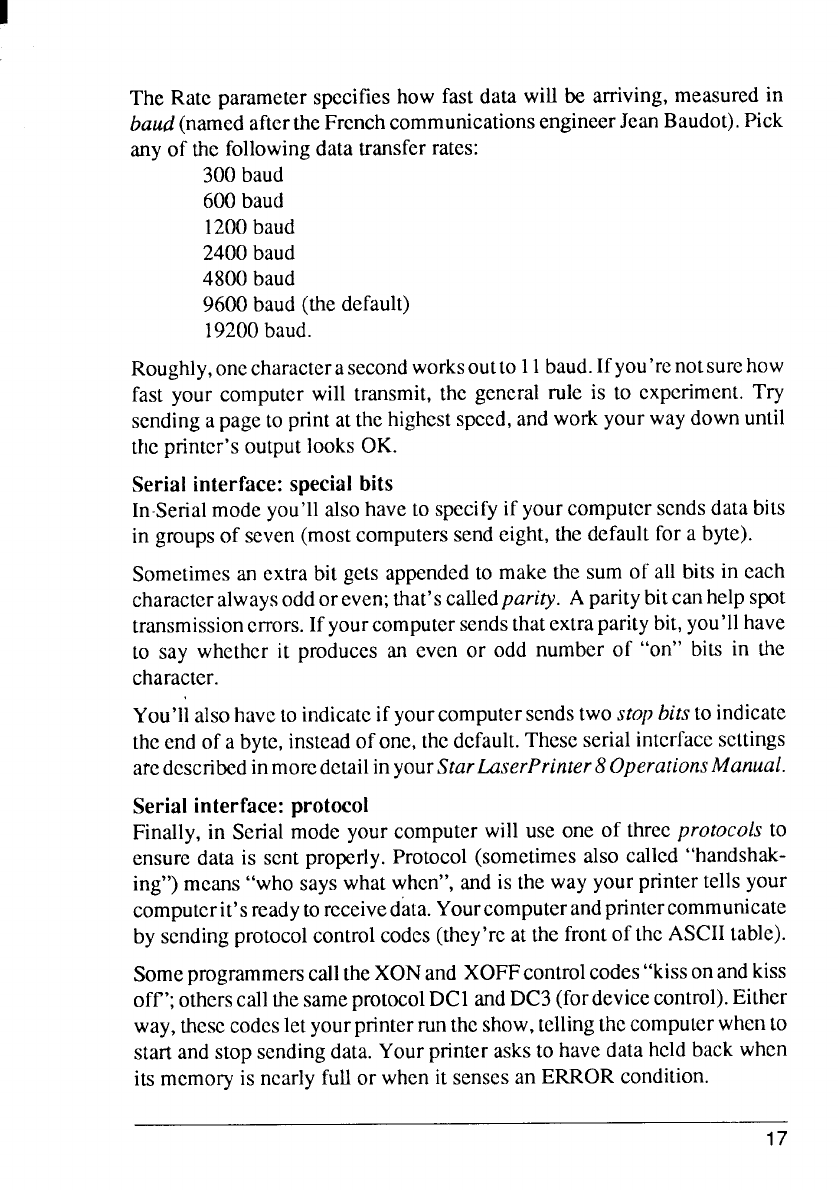
The Rateparameterspecifieshow fast data will be arriving,measuredin
baud(namedaftertheFrenchcommunicationsengineerJeanBaudot).pick
anyof thefollowingdatatransferrates:
300baud
600baud
1200baud
2400baud
4800baud
9600baud(thedefault)
19200baud.
Roughly, one character asecond worksoutto 11baud.1fyou‘renot surehow
fast your computer will transmit, the general rule is to cxpcrimcnt. Try
sending a page to print at the highest speed, and
workyourwaydownuntil
thepnntcr’soutputlooksOK.
Serial interface: specialbits
In-Serialmodeyou’llalsohaveto specifyif yourcomputersendsdatabits
in groupsof seven(mostcomputerssendeight,the defaultfora byte).
Somelimesan extrabit gets appendedto makethe sum of all bits in each
characteralwaysoddoreven;that’scalledparity. Aparitybitcanhelpspot
transmissionerrors.Ifyourcomputersendsthatextraparitybit,you’llhave
to say whetherit produces an even or odd numberof “on” bits in the
character.
You’llalsohavetoindicateifyourcomputersendstwostopbitstoindicate
thecndof a byte,insteadofone,thedefault.Theseserialintcrfaccsettings
aredcscnbedinmoredetailinyourStarLaserPrinter8 OperationsManual.
Serial interface: protocol
Finally,in Serialmodeyour computerwill use one of threeprotocolsto
ensure data is sent properly. Protocol (sometimes also called “handshak-
ing”)means“whosayswhatwhen”,andis the way yourprintertellsyour
computerit’sreadytoreceivedata.Yourcomputerandpnntercommunicate
by sendingprotocolcontrolcodes(they’reat thefrontof theASCIItable).
SomeprogrammerscalltheXONand XOFFcontrolcodes“kissonandkiss
off’;otherscallthesameprotocolDC1andDC3(fordevicecontrol).Either
way,thesecodesletyourprinterruntheshow,tellingthecomputerwhento
startandstopsendingdata.Yourprinterasksto havedataheldbackwhen
its mcmoryis nearlyfullor whenit sensesan ERRORcondition.
17


















